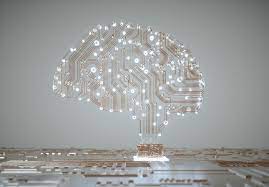Using artificial intelligence to help datacentres navigate to net-zero
SOURCE: COMPUTERWEEKLY.COM
MAY 30, 2022

In this guest post, David McGuirk, director of datacentres and telecom at industrial asset performance company QiO Technologies, sets out the role that artificial intelligence can play in reducing carbon emissions and improving the energy efficiency of datacentres
We are all facing the same pressures and pain points, regardless of industry or sector: rising energy and fuel costs, rising raw material costs, and reduced operating and profit margins. At the same time, there is pressure from stakeholders to reduce carbon emissions and meet sustainability targets.
Datacentres are facing pressures from all sides, with environmental regulations and businesses demanding greener solutions.
It is well known that datacentres are enormous consumers of resources, and demand for the computing power that datacentres provide is growing at an astonishing rate. As global concern for climate change increases, building sustainability into strategies is becoming a fundamental factor in datacentre operations and datacentre PR.
But is the pressure to meet sustainability targets creating extra problems?
Many datacentre providers have already created plans for environmental initiatives. However, a commitment to s significant reduction in carbon and a desire to demonstrate quick results often results in carbon offsetting.
Not all emissions can be avoided or substituted, and reducing carbon emissions can involve wide-ranging organisational change, which takes time and investment. As a result, many organisations do go down this route but seize upon new initiatives as the solution to increasing sustainability. They look to new, discrete projects with easy-to-calculate returns like replacement technologies, such as Electric Vehicles (EVs) or replacing lighting with LEDs or renewable energy.
What they often miss is finding quick sustainability wins within the infrastructure they’ve already got by improving energy efficiency throughout their operation.
Use the power of AI to make better business decisions faster
The good news is that artificial intelligence (AI)-based solutions exist that can power rapid sustainability gains within six weeks and that can easily scale up to unlock efficiency optimisation across your operation.
The latest advances in AI enable the analysis of massive datasets from assets within any industry without the need to deploy large teams of data scientists (whether it be wind turbines, photovoltaics, jet engines, shipping, oil & gas pumps, cooling, or IT servers) and generate real-time insights using pattern recognition. These insights offer the ability to make data-driven business decisions that can fully optimise operations for energy efficiency, emissions reduction and keep track of progress towards sustainability goals.
Many environments are not making good use of the data they already have, and there’s a perception that it takes hundreds of data feeds to gather the necessary insight for optimisation. In reality, as few as five data feeds can be enough to make noticeable improvements.
The starting point is creating a solid data baseline by connecting to data from real-time sensor readings, databases, telemetry data from individual devices (servers, switches, storage etc.), industrial assets (sensors, PLC and control systems, edge devices) and other internal data sources (ERP, enterprise applications, cloud file storage).
AI then searches for the most efficient way to operate devices and assets, subject to unlimited user defined constraints or parameters. By searching for and recommending the best closest historical performance, AI can then simulate even better performance using pareto front optimisation that meets defined quality targets and process limits with the recommended control set points, offering immediate energy cost and emissions reductions.
Reducing energy by optimising cooling and reducing water usage, controlling CPU P and C states to match workload efficiency, and predictive asset failure are just some of the benefits that AI can deliver. By operating in a closed or open loop energy savings of 10 -40% can be achieved and costly downtime avoided.
On-premise, colocation and cloud providers and customers can all reap the benefits of AI. The technology accelerates digital transformation, optimises energy costs in conjunction with production output, maximises renewable energy mix, reduces carbon emissions and provides reporting on sustainability metrics that track real-time progress towards net-zero. What’s more accurate tracking at device level (even down to each individual core) can ensure the accuracy of billing and Scope 2 and 3 emissions reporting.
QiO works with asset heavy and energy intensive industry to deliver AI powered sustainability. The first rule for improving sustainability is to work out how to make better use of what you already have. We believe that data holds the key to doing more with less, and AI delivers the insights needed to navigate to net-zero.
LATEST NEWS
WHAT'S TRENDING


Data Science
5 Imaginative Data Science Projects That Can Make Your Portfolio Stand Out
OCT 05, 2022

Eerily realistic: Microsoft’s new AI model makes images talk, sing
SOURCE: INTERESTINGENGINEERING.COM
APR 20, 2024
80% of AI decision makers are worried about data privacy and security
SOURCE: ARTIFICIALINTELLIGENCE-NEWS.COM
APR 17, 2024
AI Is Set To Change Fertility Treatment Forever
SOURCE: HTTPS://CODEBLUE.GALENCENTRE.ORG/
NOV 06, 2023
AI-empowered system may accelerate laparoscopic surgery training
SOURCE: HTTPS://WWW.NEWS-MEDICAL.NET/
NOV 06, 2023
Here’s Everything You Can Do With Copilot, the Generative AI Assistant on Windows 11
SOURCE: HTTPS://WWW.WIRED.COM/
NOV 05, 2023
Tongyi Qianwen, An AI Model Developed By Alibaba, Has Been Upgraded, And Industry-specific Models Have Been Released
SOURCE: HTTPS://WWW.BUSINESSOUTREACH.IN/
OCT 31, 2023




